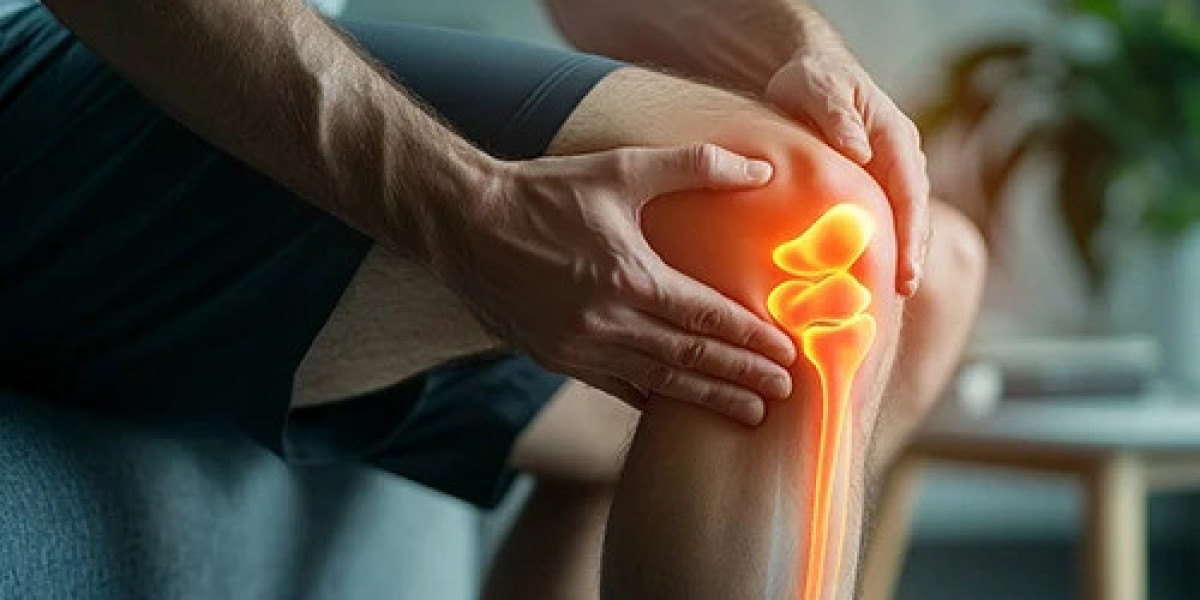Introduction
For many families, watching an older loved one struggle with persistent knee pain can be heartbreaking. What starts as mild discomfort while walking can slowly turn into stiffness, swelling, or even difficulty climbing stairs. Ignoring these symptoms often leads to worsening pain and reduced mobility. In some cases, timely evaluation can prevent the need for major procedures like total knee replacement surgery, but early awareness is key.
Knee pain isn’t just a normal part of aging; it’s a signal from the body that something needs attention. By understanding the causes, symptoms, and right treatment approach, families can help their elders regain comfort, independence, and quality of life.
Understanding Why Knee Pain Happens in Older Adults
As people age, the cushioning cartilage inside the knee joint naturally wears down. Over time, this can lead to joint stiffness, reduced flexibility, and pain with movement. Conditions such as osteoarthritis, rheumatoid arthritis, previous injuries, and excess body weight can all accelerate this process.
For many seniors, daily activities like getting out of bed, walking short distances, or standing for long periods become challenging. The pain can also lead to emotional frustration and social withdrawal, especially when mobility is limited. Recognizing these early signs helps prevent the condition from progressing into severe joint damage.
Common Signs Knee Pain Shouldn’t Be Ignored
Families often dismiss early knee pain as a sign of aging, but consistent discomfort can indicate something more serious. Here are a few red flags:
Persistent pain or swelling: If symptoms last beyond a few weeks, medical evaluation is necessary.
Grinding or popping sounds: These can signal cartilage wear or bone friction within the joint.
Decreased movement: Stiffness that worsens in the morning or after rest may point to arthritis.
Difficulty with daily tasks: Trouble walking, bending, or climbing stairs may mean the knee joint has weakened.
Visible deformity: Any change in the knee’s shape or alignment requires immediate attention.
Addressing these symptoms early through medical consultation can help manage pain effectively and delay further deterioration.
The Emotional Side of Knee Pain in the Elderly
Pain doesn’t only affect the body; it deeply impacts mental well-being. Many older adults feel frustrated when they can’t move freely or depend on others for daily tasks. Family members might notice mood changes, decreased participation in social events, or withdrawal from hobbies once enjoyed.
Understanding these emotions with compassion is crucial. Listening, offering help, and encouraging treatment show care and support. The goal isn’t just pain relief but restoring confidence and a sense of independence.
When to Consider Advanced Treatment Options
If lifestyle changes, physiotherapy, and medications fail to provide relief, an orthopaedic specialist might recommend exploring advanced options. For severe arthritis or chronic pain, TKR (total knee replacement surgery) can help restore normal movement and comfort.
This procedure replaces the damaged joint surfaces with artificial implants designed to mimic natural movement. Today’s techniques are far more precise, allowing for shorter recovery times and improved outcomes. However, deciding on surgery is a major family decision that requires proper guidance and evaluation.
Choosing the Right Hospital for Knee Care
Selecting the right hospital plays a major role in ensuring a safe and successful outcome. Here are some key factors families should consider:
Specialized Orthopaedic Team: Look for hospitals with dedicated knee and joint specialists who have extensive experience with senior patients.
Advanced Technology: Facilities equipped with robotic systems and modern diagnostic tools ensure better precision and faster recovery.
Comprehensive Rehabilitation Support: Post-surgery physiotherapy and home recovery programs make a big difference in healing.
Patient-Centered Care: Hospitals that focus on communication, comfort, and family involvement create a more positive healing experience.
Transparent Communication: Clear discussions about treatment plans, costs, and follow-up care help families make informed decisions.
Each of these factors builds confidence and ensures that patients receive the safest, most compassionate care possible.
How Families Can Help in Recovery
Family involvement is vital for successful healing. Simple gestures like helping with daily routines, encouraging gentle exercises, or accompanying elders to follow-up appointments can greatly improve their morale.
Maintaining a balanced diet rich in calcium, vitamin D, and protein supports joint health. Gentle walking, stretching, or water therapy—under medical supervision—helps strengthen muscles around the knee. Most importantly, patience and positivity go a long way in boosting confidence during recovery.
Preventing Future Knee Problems
Prevention starts with awareness. Encouraging elders to stay active within their comfort level helps maintain flexibility. Maintaining a healthy weight reduces joint stress, while regular check-ups can detect early signs of degeneration.
Wearing supportive footwear, using walking aids when needed, and avoiding sudden movements all contribute to joint safety. The focus should always be on maintaining mobility, independence, and a pain-free lifestyle for as long as possible.
Conclusion
Knee pain in older adults should never be taken lightly. It affects more than movement—it impacts mental health, confidence, and overall quality of life. Recognizing symptoms early and seeking medical guidance helps prevent complications and ensures long-term wellness.
At Soundarapandian Bone and Joint Hospital(SBJH), we are committed to providing world-class healthcare with the warmth and compassion of a family-run institution. Guided by a tradition of care, our highly skilled orthopaedic surgeons and our dedicated team work together to ensure that every patient receives personalized treatment. We combine the latest in cutting-edge technology with a deep sense of empathy and ethics, striving for excellence in orthopaedics while fostering a welcoming, supportive environment for all.
FAQs:
Q1: Is knee pain a normal part of aging?
While mild stiffness can occur with age, persistent pain is not normal. It may indicate arthritis or cartilage wear and should be evaluated by an orthopaedic specialist.
Q2: What lifestyle changes help reduce knee pain?
Maintaining a healthy weight, performing low-impact exercises, and ensuring adequate calcium and vitamin D intake all support joint health.
Q3: When should an older adult see a doctor for knee pain?
If the pain lasts more than a few weeks, affects sleep, or limits daily movement, it’s time for a medical consultation to rule out joint degeneration.
Q4: What are the long-term benefits of early diagnosis?
Early diagnosis allows timely treatment, preventing severe joint damage and maintaining independence in daily life.
Q5: How effective is total knee replacement surgery for chronic knee pain?
When performed under expert care, total knee replacement surgery offers long-lasting pain relief, improved mobility, and enhanced quality of life for patients with advanced arthritis.








